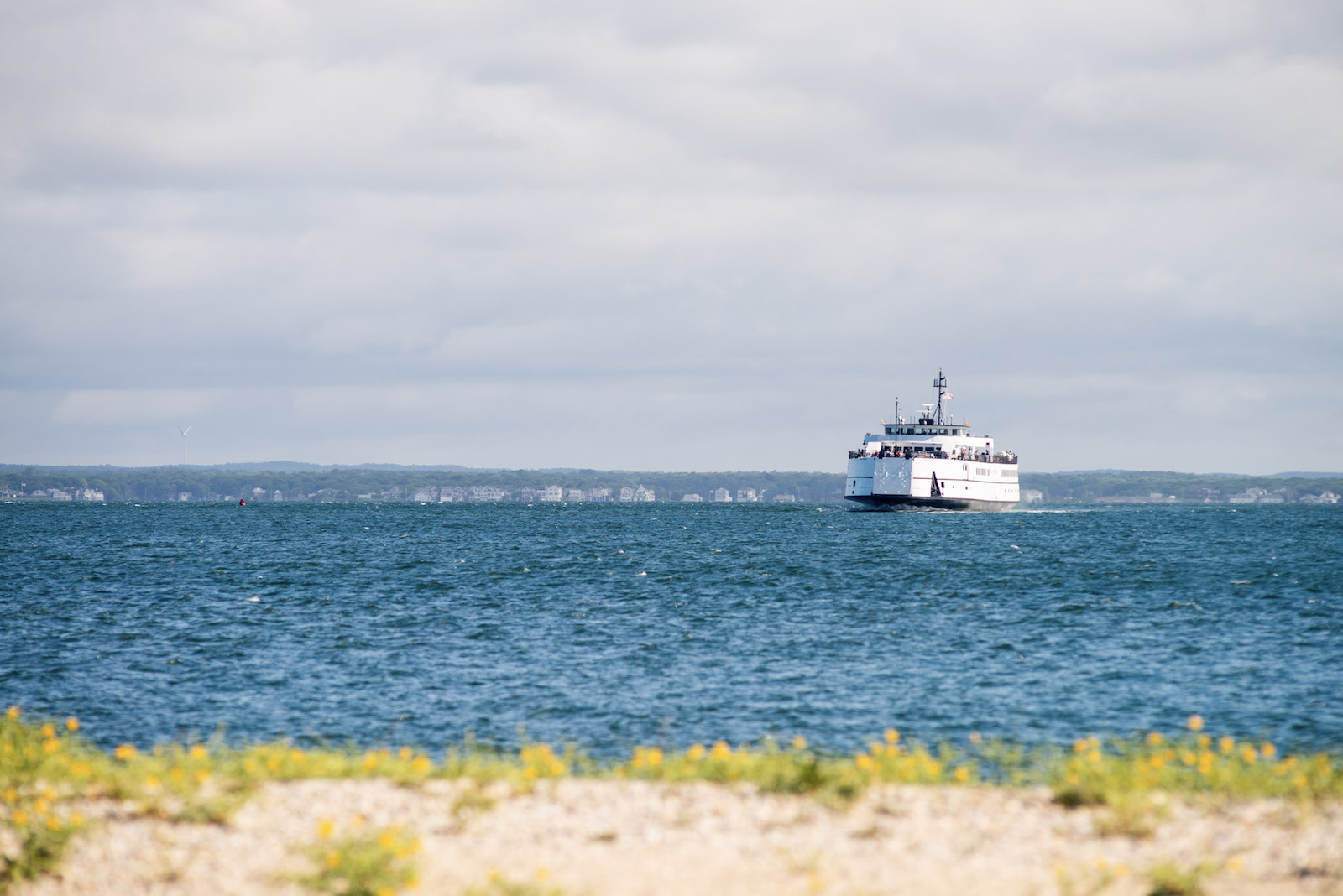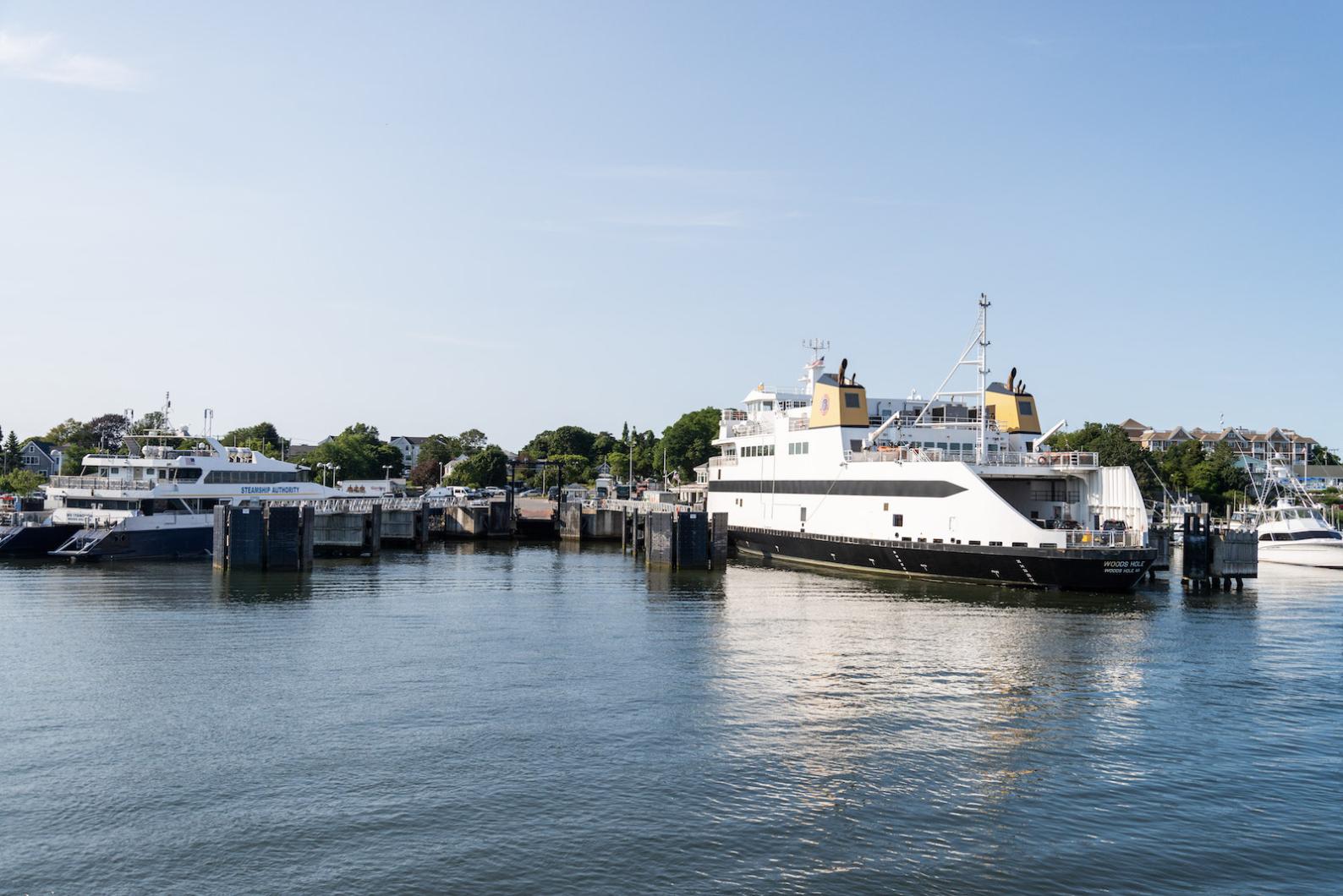The shallow harbor in Hyannis is taking its toll on Steamship Authority ferries.
Steamship officials detailed the effects of the port’s shoaling, sandy conditions at a board of governors meeting Wednesday, saying abrasion from sand on the harbor bottom caused the M/V Nantucket to go out for emergency repairs.
A rubber seal protecting the ferry’s propeller shaft failed August 2 due to sand damage, and other ferries are starting to see similar problems.

“The sand just rips it up,” said Steamship Authority director of marine operations Mark Amundsen.
“I suspect when we do the Eagle and Woods Hole dry docking, we’re going to see the whole thing over again,” Mr. Amundsen said.
The ferry line, along with the Cape and Islands’ federal legislative delegation, are now pushing for Hyannis harbor to be dredged. While ferries on the Martha’s Vineyard route have plenty of depth at their terminals, it’s not unusual for the Steamship Authority to swap vessels between routes on occasion, so the issue of sand damage could affect Vineyard travelers as well.
The M/V Nantucket port and starboard shaft seals and the ferry’s cutlass bearing, which surrounds the propeller shaft, all needed replacement ahead of schedule because of the sand, Mr. Amundsen said.
The M/V Woods Hole, the newest in-service boat in the Steamship’s fleet, is already showing some of the Nantucket’s symptoms, as both boats routinely plow through sand on their way in and out of the Hyannis terminal.
“It’s polishing the bottoms,” Mr. Amundsen said. “There’s no paint left in the bow area on both vessels.”
The Army Corps of Engineers last dredged Hyannis Harbor in 2013, after it shoaled so heavily that ferries and other vessels had to wait offshore, sometimes for hours, until the tide allowed them to enter.
“We had to adjust our sailing times from [Nantucket] to try to beat the tide in and beat the tide out,” said Steamship general manager Robert Davis, who told the board the authority has been working with the Cape and Islands’ federal legislators, senators Elizabeth Warren and Ed Markey and representative Bill Keating, toward another round of dredging.
The three lawmakers have submitted a request to the Army Corps of Engineers, stressing the importance of Hyannis Harbor to the Steamship Authority's service to Nantucket, Mr. Davis said.
Meanwhile, Mr. Davis and Mr. Amundsen said, the authority is dry-docking its ferries for maintenance every other year, a greater frequency than the U.S. Coast Guard requires, and experimenting with different materials to see if they’re more resilient than rubber for bearings and seals.
No shipyards in Massachusetts or Rhode Island were available on short notice when the Nantucket’s failed seal was discovered August 2, but Thames Shipyard in New London, Conn. was willing to undock its own M/V Caribbean in order to do the work on August 5 and August 6. The ferry was back in service after Coast Guard sea trials August 7.
While out of commission, the Nantucket was briefly replaced on the schedule by the M/V Gay Head, which had been docked at the authority’s maintenance facility in Fairhaven.
But on the Gay Head’s second trip, Mr. Amundsen said, the chief engineer discovered engine trouble.
An inspection using remote cameras revealed that the engine's turbocharger had been wrecked by four small pieces of an unidentified material that had either come loose from inside the turbo or bypassed the filtering system meant to keep things out of it, Mr. Amundsen said.
The turbocharger has been replaced and its pipes flushed and cleaned, he said, with the Gay Head expected back in service by this weekend.
Mr. Davis assured the board that the recent breakdowns were not due to a lack of preventive maintenance.
“I don’t want to give the impression that we’re letting these vessels go until there is a failure. We’re trying to stay ahead of it,” he said.
Since 2017, the Steamship Authority has increased its maintenance budget by nearly 10 per cent each year.
“We’re up over $24 million this year in maintenance expenses and probably 90 per cent of that is on the vessel side,” Mr. Davis said.







Comments (2)
Comments
Comment policy »